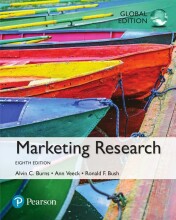Summary: International Economics And Businesses.
- This + 400k other summaries
- A unique study and practice tool
- Never study anything twice again
- Get the grades you hope for
- 100% sure, 100% understanding
Read the summary and the most important questions on International Economics and Businesses.
-
1 Chapter 1: The International Economy & Globalization
This is a preview. There are 16 more flashcards available for chapter 1
Show more cards here -
The federal reserve policy (FED):
A policy a country has when it suffers from the repercussions of economic interdependence. Also, when domestic policies have spill over effects on the economies of other countries. -
Common misconceptions of international trade are:
· If one trading partner benefits, the other must suffers. Which is incorrect as both partners can benefit from the trade.
· Imports result in unemployment and burden the economy, while export enhance economic growth and jobs for workers.
· Tariffs, quotas, and other import restrictions will eventually result in more jobs for domestic workers. Which is incorrect as a decrease in imports does not take place in isolation. Plus, trade restrictions that decrease the volume of import will also decrease exports, which results in less profit for a country and job loss. -
Threats due to international trade are:
In some industrial countries where rising unemployment and wage inequality have made people feel apprehensive about the future. Cheap exports produced by lower – cost foreign workers threaten to eliminate jobs for some workers in industrial countries. Also, some firms are relocating abroad in search of poor immigrants that are willing to work for lower wages. Trade with low – wage developing countries is particularly threatening to unskilled workers in the import – competing sectors of industrial countries. -
If an economy opens up to international trade:
· Domestic prices become more aligned with international prices.
· Wages tend to increase for workers whose skills are scarcer internationally than at home.
· Wages decrease for workers who face increased competition from foreign workers.
· The various skills in the world marketplace keeps changing, which is harmful for countries with an abundance of workers who have skills that are becoming less scarce.
· Wages of workers will deteriorate of countries that do not match the productivity gains of their competitors. -
1. What factors explain why the world’s trading nations have become increasingly interdependent, from an economic and political viewpoint, during the post – World War II era?
Barriers were eliminated. Therefore, the movements of goods andm8 services, business enterprises, capital and technology increased. Subsequently, there was a move between workers of nations. -
2. What are some of the major arguments for and against an open trading system?
The argument against open trade is the increase of competition betweendomestic workers with skills that are not scarce andinternational workers who possess skills that are,internationally seen, scarce.Wages that willdecrease ifcompanies do notcompete with theproductivity level offoreign companies .Immigrants who arewilling to work for a lower wage and, therefore, take jobs ofdomestic workers . Also,domestic prices will bealigned withinternational prices.Decreasing wages fordomestic workers andincreasing wages forinternational workers . -
3. What significance does growing economic interdependence has for a country like the United States?
It affects the financial markets, ownership of production facilities and labour force. -
4. What factors influence the rate of growth in the volume of world trade?
Technology, the free movement of goods and services, capital, and workers. -
5. Identify the major fallacies of international trade?
International workers who take in the jobs of domestic workers as they are willing to work for a lower wage. Firms that move overseas. Decrease of salary. Increasing consumer prices. A high level of unemployment. -
6. What is meant by international competitiveness? How does this concept apply to a firm, an industry, and a nation?
International competitiveness can be analysed in terms of a firm, an industry, and a nation. Key to the concept of competitiveness is productivity, or output per worker.
- Higher grades + faster learning
- Never study anything twice
- 100% sure, 100% understanding































